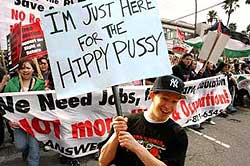Back when I was in my formative years in the 1980’s, it seemed that the mighty Japanese could do no wrong economically. Many of us in California thought we would be working for them and they would own the place. Many thinkers on the Left Of Center (and in fairness, there are a few serious thinkers on the Left Of Center) like Lester Thurow of MIT or Chalmers Johnson of the University of California sang the praises of Japan’s Ministry of International Trade and Industry, how it benevolently planned out a prosperous economic future for that nation. American industrialists like Lee Iacocca chimed in.
Japan, in these wonky thinkers minds, vindicated their belief that statism, led by academic wonks like themselves, COULD work.
Obviously, state run industry socialism had proven to be an utter failure, as the corpses of the British, French, Swedish and some other Euro economies had proven. But Japan, in the minds of these Left Of Center thinkers, had done it right. Private enterprise remained private, but the benevolent bureaucrats of MITI set up the boundaries in which it could operate, for the good of the country as a whole.
Japanese corporations, it was said, had a much more harmonious work culture. The pay gap between the lowest floor sweeper and the CEO was so many times lower than the USA or even Europe. And lifetime employment and a good retirement was the rule. Who needs a high-tax government-run welfare state when the “Kaisha” corporation, nurtured by industrial policy, with a high-priced domestic consumer goods market and an export-driven foreign consumer goods market, could provide it for you?
Of course, there were some serious problems with this cozy corporatist arrangement, even if you conceded their statist premise.
For starters, ecology fell by the wayside. Japanese cities had and to a lesser extent still do have a level of air quality and water pollution that would be politically intolerable in Western Europe or the United States.
Secondly, for leftists enchanted with “diversity”, Japan does not suffer such idiocy. “The nail that sticks up will be hammered down”. Feminism? A lack of women executives? Don’t make the Japanese bosses laugh. Minority rights? They don’t exist there. Japan has not imported a large underclass of Latino or Muslim immigrant gruntworkers that at best prove somewhat difficult to integrate into the larger society, as we are seeing in the USA, and at worst prove to be downright deadly to it, as we are seeing in Europe. The few minorities that do exist in Japan are either clearly second class (make that even third or fourth class) citizens like Korean residents, or, like Western expatriates, are seen as exotic “gai-jin” objects of curiosity, like creatures from another world. And in a very monocultural and conformist society like Japan, they are.
Third, the cozy “I’m from the government and I am here to help” relationship between politics and business led to corruption and scandals that also would also have been politically intolerable in Europe or the USA. Part of the reason for Japan’s apparent economic might in the 1980’s, and Japan’s fall from economic grace in the early 1990’s, was the fact that the Japanese were using accounting methods that would have made the Enron and WorldCom executives blush. There’s no antitrust enforcement or “consumer rights” to speak of in Japan.
But 15 years ago, even ignoring those three drawbacks, the sweet magic of industrial policy clearly turned into a sour and phony parlor trick. Japan became the macroeconomic equivalent of a Pokemon craze.
Industrial policy may have worked well when it came to rebuilding infrastructure from the rubble of World War Two, and it worked tolerably well for those industries closely tied to that infrastructure: textiles, steel, motor vehicles, shipbuilding, machine tooling. Even electronics, like stereos and televisions, could be said to be tied to the basic infrastructure, like telephones.
But when it came to anything at a higher level higher than that, the MITI wonks were, well, less than successful. Productivity slumped, and new products fizzled. High Definition TV? Computer Networks and Software? Cell phones and advanced telecommuniations? The Mighty MITI misstepped and stumbled badly. In 2001, it was reorganized and renamed the Ministry of Economy, Trade, and Industry, focusing on the economy as a whole and not just industrial policy.
A linked article indicates that even in MITI’s heyday, industrial policy didn’t always work either, but at least then it was dealing in industrial and technological catch-up, rather than leadership.
George Will notes:
“The economy succumbed to the cumulative inefficiencies of government commands. It buckled beneath the "iron triangle'' of favors-seeking big businesses, the favors-dispensing Liberal Democratic Party, and government bureaucracy. That system produced the ballooning of nonperforming financial assets. Japan's nominal Gross Domestic Product still is less than it was in 1997; America's Nominal GDP has increased more than 50 percent since then.”Moreover, like Western Europe, Japan faces the same problem of a generous benefits for a growing population of old people, old people who are living longer as medicine improves, to be financed by a shrinking population of young people. And this shrinking is not just in relative terms either. Japan has closed 4,000 schools in the last 20 years, and the nation has a fertility rate -- the number of children per woman of childbearing age -- of 1.32. The replacement rate, which keeps population from shrinking, is 2.1. (This assumes a 50/50 male/female birthrate; the extra 0.1 is necessary for those whose lives are cut short by wars, disease, accidents, natural disasters, and other tragedies). Last year, Japanese deaths exceeded births by 21,408.
The U.S. fertility rate is right at replacement level, but immigration of one million a year legally (and probably another half million a year illegally) still causes relatively rapid US population growth.
It is a telling sign that some industries in Japan are seriously declining: toys and games, infant and children’s apparel, educational products. The new crop of kids just isn’t there in enough numbers.
Moreover, the toys that are appearing are essentially robot companions for lonely adults:
Given that the proportion of old is rising and the absolute numbers of young are shrinking, Japan has three hard choices:
1. Cut benefits and have the old people work longer. This is politically difficult if not impossible.
2. Import many more cheap alien workers, the way the USA and Europe have. In a very conformist and monocultural society like Japan, this is culturally and also politically impossible. Moreover, as George Will notes, in a Japan that is more crowded and polluted than Europe, the attitude seems to be: “Fewer people? Whew! What a relief….”
3. Increase the productivity of the working population, through more entrepreneurship, with tax cutting policies that encourage this.
Japan has mostly chosen the third option. Japan’s economy has been rising since 2002, and why is that? Because the ruling Liberal Democratic Party (don’t let the name fool you, it’s quite Right-Of-Center) has embraced more entrepreneurship. Former Prime Minister Junichiro_Koizumi and his successor Shinzo_Abe have been very explicit about this.
But more entrepreneurship means more inequality of outcomes, even though the overall outcome is more prosperity for all. And here is where the industrial policy wonks of the past will no doubt kick up their heels and start screaming. This is where the dreaded “age of greed and selfishness” that they deplore emerges. In other words, Japan is experiencing the Reagan Revolution nearly twenty five years after the United States.
In a way this quarter century lag isn’t new. Japan had its technocratic “end of ideology” and relative harmony between big government, big business and big labor in the 1980’s, about 25 years after the USA did in the late 1950’s and early 1960’s. Chalmers Johnson and Lester Thurow had NOTHING on Daniel Bell.











No comments:
Post a Comment